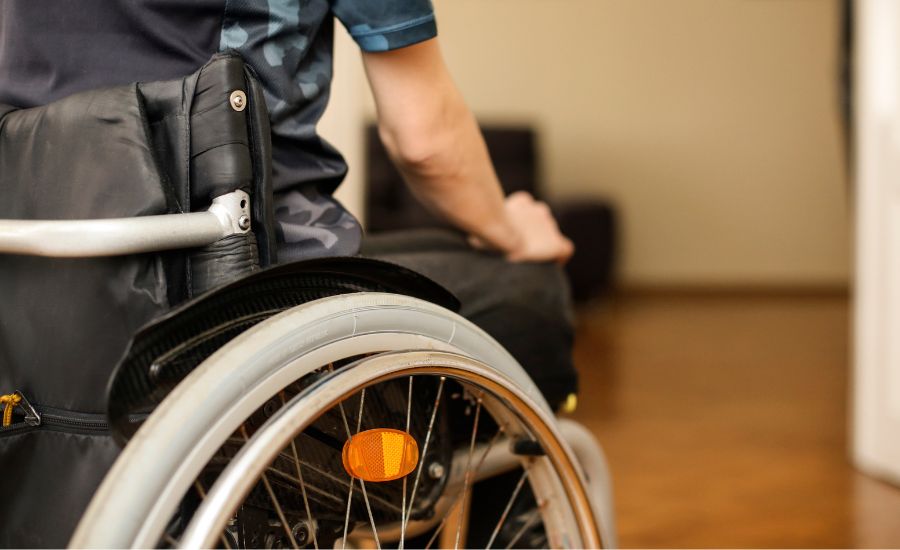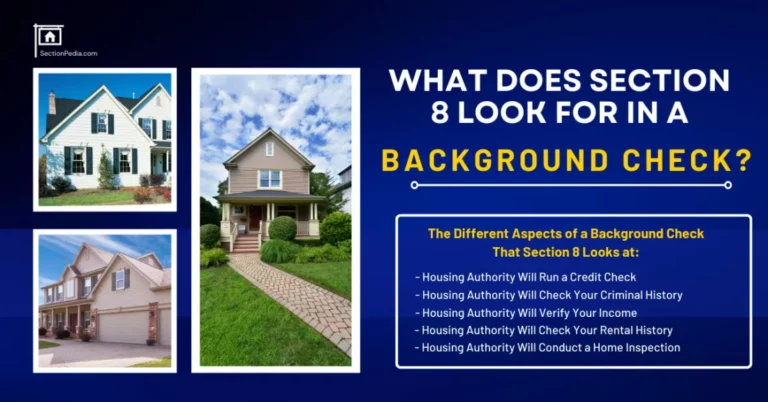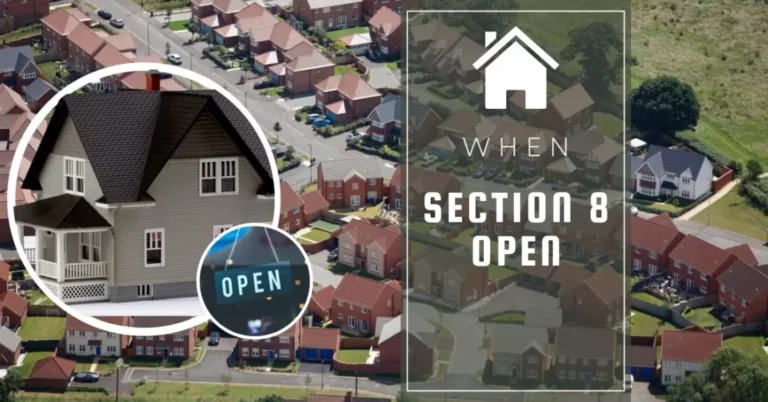Modification and Reasonable Accommodation Section 8
Reasonable Accommodation Section 8? Fair Housing Act and laws are legislative measures designed to protect individuals from discrimination when seeking housing. At the heart of fair housing lies the principle when they provide reasonable accommodations and reasonable modifications. This principle recognizes that a person with a disability-related need may face barriers that hinder their access to housing on an equal basis.

What would be considered a reasonable accommodation Section 8?
Reasonable accommodations are modifications, adjustments, or changes to a housing provider’s policies, practices, or physical structures that enable a person with a disability-related need to have equal access to housing opportunities, which protects them from disability discrimination.
The specific nature of reasonable accommodations and reasonable modifications can vary widely based on the individual’s disability and needs, as well as the context of the housing situation.
Here are some examples of what might be considered reasonable accommodations:
Physical reasonable modifications:
- Installing ramps or lifts for individuals who use wheelchairs or have mobility impairments.
- Widening doorways to accommodate wheelchairs or mobility devices.
- Installing grab bars or handrails in bathrooms for individuals with balance issues.
- Lowering countertop heights for individuals who use wheelchairs.
Policy adjustments:
- Allowing a service animal or emotional support animal for individuals with disabilities that require them.
- Adjusting the pet policy to accommodate individuals with allergies to certain animals.
- Granting permission for extended visitor stays for a person with a disability-related need who needs assistance.
Communication aids:
- Providing written materials in alternative formats such as large print or braille for individuals with visual impairments.
- Offering communication assistance or interpreters for individuals who are deaf or hard of hearing.
Policy exceptions:
- Adjusting quiet hours policies for individuals with sensory sensitivities.
- Allowing individuals with disabilities to have priority parking spaces closer to their units.

Flexibility in rent payment:
- Adjusting rent payment schedules for individuals who receive disability benefits on specific dates.
Accommodations for the visually impaired:
- Providing accessible signage with raised letters and braille.
- Offering audible signals in elevators for individuals with visual impairments.
Accessible entryways:
- Providing accessible paths of travel from parking areas to entrances.
- Ensuring that common areas and amenities are accessible to all residents.
Temporary accommodations:
- Offering temporary housing on a lower floor for individuals recovering from surgery or injury.
- Providing temporary assistance during emergencies for individuals with mobility impairments.
Flexible lease terms:
- Allowing lease terminations without penalty for a person with a disability-related need who needs to move for medical reasons.
Reasonable accommodations eliminate barriers that would otherwise prevent individuals with disabilities from fully enjoying and accessing housing opportunities. What constitutes reasonable accommodations and reasonable modifications depends on factors such as the individual’s disability, the specific limitations it imposes, and the housing provider’s resources and operational constraints.
The scope of the ADA encompasses housing financed by State or local governments and may also extend to specific aspects of private housing, like a publicly accessible rental office.

Who is eligible for reasonable accommodation under fair housing laws?
In the United States, the Fair Housing Act defines a disability as a physical or mental impairment that substantially limits one or more major life activities. To be eligible for reasonable accommodation under fair housing laws:
- The individual must have a disability. This disability should meet the criteria outlined in the relevant fair housing laws. This can encompass a broad range of physical, mental, sensory, and cognitive impairments.
- A person’s disability must substantially limit a major life activity. The disability should have a significant impact on an individual’s ability to perform major life activities such as walking, seeing, hearing, breathing, working, and more.
- The requested accommodation must be necessary. The accommodation being requested should be directly related to the individual’s disability and necessary to ensure equal access to housing-related activities.
It’s essential to understand that reasonable accommodation is intended to address the unique needs of individuals with disability-related needs and create a level playing field for them in the housing realm.
Who is eligible for reasonable accommodation under fair housing laws?
In the United States, the Fair Housing Act defines a disability as a physical or mental impairment that substantially limits one or more major life activities. To be eligible for reasonable accommodation under fair housing laws:
- The individual must have a disability. This disability should meet the criteria outlined in the relevant fair housing laws. This can encompass a broad range of physical, mental, sensory, and cognitive impairments.
- A person’s disability must substantially limit a major life activity. The disability should have a significant impact on an individual’s ability to perform major life activities such as walking, seeing, hearing, breathing, working, and more.
- The requested accommodation must be necessary. The accommodation being requested should be directly related to the individual’s disability and necessary to ensure equal access to housing-related activities.
It’s essential to understand that reasonable accommodation is intended to address the unique needs of individuals with disability-related needs and create a level playing field for them in the housing realm.
Who is eligible for reasonable accommodation under fair housing laws?
In the United States, the Fair Housing Act defines a disability as a physical or mental impairment that substantially limits one or more major life activities. To be eligible for reasonable accommodation under fair housing laws:
- The individual must have a disability. This disability should meet the criteria outlined in the relevant fair housing laws. This can encompass a broad range of physical, mental, sensory, and cognitive impairments.
- A person’s disability must substantially limit a major life activity. The disability should have a significant impact on an individual’s ability to perform major life activities such as walking, seeing, hearing, breathing, working, and more.
- The requested accommodation must be necessary. The accommodation being requested should be directly related to the individual’s disability and necessary to ensure equal access to housing-related activities.
It’s essential to understand that reasonable accommodation is intended to address the unique needs of individuals with disability-related needs and create a level playing field for them in the housing realm.
Who is eligible for reasonable accommodation under fair housing laws?
In the United States, the Fair Housing Act defines a disability as a physical or mental impairment that substantially limits one or more major life activities. To be eligible for reasonable accommodation under fair housing laws:
- The individual must have a disability. This disability should meet the criteria outlined in the relevant fair housing laws. This can encompass a broad range of physical, mental, sensory, and cognitive impairments.
- A person’s disability must substantially limit a major life activity. The disability should have a significant impact on an individual’s ability to perform major life activities such as walking, seeing, hearing, breathing, working, and more.
- The requested accommodation must be necessary. The accommodation being requested should be directly related to the individual’s disability and necessary to ensure equal access to housing-related activities.
It’s essential to understand that reasonable accommodation is intended to address the unique needs of individuals with disability-related needs and create a level playing field for them in the housing realm.
What types of disabilities qualify for reasonable accommodation?
- Mobility impairments. Individuals who have difficulty walking, require the use of wheelchairs or mobility aids or have limited motor functions due to such an impairment, for example, paralysis or muscular dystrophy.
- Visual impairments. People who are blind, have low vision, or have other visual impairments that substantially limit their ability to see or interpret visual information.
- Hearing impairments. Individuals who are deaf or hard of hearing, or who have other hearing-related disabilities that impact their ability to communicate and interact with their environment.
- Chronic illnesses. Conditions like chronic pain, autoimmune disorders, and certain chronic diseases substantially limit an individual’s ability to engage in daily activities.
- Mental health conditions. Mental disability and disorders such as depression, anxiety, bipolar disorder, and post-traumatic stress disorder (PTSD) that impact an individual’s emotional and mental well-being.
- Intellectual disabilities. Individuals with cognitive impairments that affect their ability to learn, reason, make decisions, and perform daily tasks.
- Neurological conditions. Conditions like epilepsy, multiple sclerosis, and Parkinson’s disease affect the nervous system and can limit motor functions and coordination.
- Communication disorders. Speech disorders and language impairments that substantially limit an individual’s ability to communicate effectively.
- Developmental disabilities: Conditions such as autism spectrum disorder that impact an individual’s social, communication, and behavioral skills.
- Chronic respiratory conditions. Conditions like asthma or chronic obstructive pulmonary disease (COPD) affect an individual’s breathing and overall respiratory function.
- Recovery from surgery or injury. Individuals undergoing post-operative recovery or rehabilitation after an injury that temporarily limits their mobility or ability to perform daily activities.

What is the process when you request reasonable accommodations?
- Identify your needs. Determine what specific accommodation you need to ensure equal access to housing.
- Gather documentation. If applicable, gather supporting documentation from medical professionals, therapists, or other relevant sources.
- Contact the housing provider. Reach out to your housing provider, whether it’s a landlord, property management company, or homeowner’s association.
- Submit a formal request. Put your accommodation request in writing. Be clear and concise about the accommodation you’re requesting and why it’s necessary due to your disability.
- Include documentation. Attach any supporting documentation you’ve gathered to your written request. This helps the housing provider understand the legitimacy of your request.
- Wait for a response. Give the housing provider a reasonable amount of time to review your request. They are typically required to respond promptly.
- Engage in the interactive process. If the housing provider has questions or needs more information, engage in an interactive dialogue.
- Discuss potential solutions. Work collaboratively with the housing provider to find feasible solutions that accommodate your needs while also considering their operational constraints.
- Get confirmation in writing. Once an accommodation is agreed upon, request written confirmation from the housing provider detailing the approved accommodation and any relevant terms.
- Regularly communicate with the housing provider to ensure that the agreed-upon accommodation is implemented as discussed.
- Keep records. Maintain copies of all written correspondence, documentation, and agreements related to your reasonable accommodation request.
What is an example of a fair housing violation?
Example: Denial of reasonable accommodation for a service animal.
A housing provider manages an apartment complex. A tenant with a visual impairment requests permission to have a service dog, which assists them in navigating their surroundings safely. The tenant provides all the necessary documentation from their healthcare professional confirming the need for the service dog due to their disability.
However, the housing provider denies the tenant’s request, stating that their no-pets policy applies to all residents and that the tenant must abide by the policy. The tenant explains that the service dog is not a pet but a necessary accommodation due to their disability.
Despite the tenant’s efforts to inform the housing provider about the Fair Housing Act’s requirement to make reasonable accommodations, the provider maintains their denial. In this scenario, the housing provider’s denial of the reasonable accommodation request for a service animal constitutes a fair housing violation based on disability discrimination.

What is a reasonable accommodation in NYC housing?
• In addition to the general concept of reasonable accommodation, NYC has specific regulations and considerations that apply to housing accommodations:
- Communication accessibility. In NYC, housing providers are encouraged to provide information about reasonable accommodations in languages spoken by the community to ensure that individuals with limited English proficiency can fully understand their rights and options.
- Support for immigrant communities. NYC’s diverse population includes many immigrants. Housing providers are expected to offer reasonable accommodations that consider the cultural and linguistic needs of residents from different backgrounds.
- Reasonable modification and rent-stabilized housing. NYC’s rent-stabilized housing sector has its own set of regulations. Tenants in such housing have the right to make reasonable modifications at their own expense, even if the landlord normally wouldn’t be required to make such modifications.
- Assistance animal. NYC recognizes that emotional support animals and therapy animals can be crucial for individuals with disabilities. Housing providers are expected to accommodate requests for an assistance animal by both the federal Fair Housing Act and the NYC Human Rights Law.
- Temporary medical conditions. Temporary medical conditions, such as recovery from surgery, are also recognized in NYC’s reasonable accommodation provisions. Housing providers are expected to provide short-term accommodations that address these temporary needs.
- Prompt response. NYC’s local laws emphasize that housing providers should respond to reasonable accommodation requests promptly. Delays in responding to or processing requests can be considered a violation of the city’s fair housing regulations.
- Compliance with local laws. Housing providers must adhere not only to the Fair Housing Act but also to the NYC Human Rights Law, which provides additional protections and guidelines for reasonable accommodations.
What’s the difference between reasonable accommodation and reasonable modification?
Reasonable accommodation:
- Reasonable accommodation pertains to policy adjustments, exceptions, or changes to rules, practices, or services that enable individuals with disabilities to enjoy housing opportunities equally.
- It focuses on providing equal access to existing housing without altering the physical structure of the property.
- Accommodations are generally requested by the individuals to ensure that they can fully participate in housing-related activities.
- Examples of reasonable accommodation include allowing a service animal, adjusting lease terms, permitting an assistance animal despite a no-pets policy, or providing accessible communication formats.
Reasonable modification:
- Reasonable modification refers to physical changes or alterations to the physical structure of the housing development that enable individuals with disabilities to use and enjoy the property on an equal basis.
- It involves making changes to the property itself to accommodate the specific needs of an individual with a disability.
- Modifications are usually requested by individuals who require adaptations to the housing development to make it accessible and usable.
- Examples of reasonable modification include installing ramps, widening doorways, lowering countertops, adding grab bars, or making other physical changes to ensure accessibility.
In summary, the key distinction between reasonable accommodation and reasonable modification lies in the focus and scope of the changes.
Can a housing provider deny my reasonable accommodation request? What are the grounds for denial?
Yes, a housing provider can deny a reasonable accommodation request, but only under specific circumstances that are outlined within fair housing laws:
- Lack of disability. If you don’t have a disability as defined by the fair housing laws, you won’t get the requested reasonable accommodation. The law requires that the individual seeking accommodation has a disability that substantially limits one or more major life activities.
- No nexus between disability and accommodation. The reasonable accommodation request must be directly related to your disability. If there is no clear connection between your disability and the accommodation being requested, housing providers may deny reasonable accommodation requests.
- Fundamental alteration. Housing providers are not required to make accommodations that would impose a fundamental alteration on the nature of their business or impose an undue financial or administrative burden. If the requested accommodation would require a fundamental alteration that is not reasonable, housing providers could deny the request due to this fundamental alteration.
- Health or safety concerns. If the requested accommodation poses a direct threat to the health or safety of other tenants, the housing provider might deny the request. However, housing providers should base the denial on objective evidence and not mere assumptions.
- Fraudulent request. If there is clear evidence for housing providers that the accommodation request is fraudulent or being abused, the housing provider might deny it.
- Alternate effective accommodation. If there is an equally effective alternative accommodation that is less burdensome for the housing provider, housing providers might suggest the alternate option instead.
- Not a reasonable request. If the requested accommodation is not reasonable or is not necessary to provide equal access to housing, the housing provider could deny reasonable accommodation requests.

How do I write a reasonable accommodation letter for housing?
Format and contact information:
• Place your name, address, phone number, and email at the top of the reasonable accommodation request.
• Include the date of writing and the recipient’s name, title, and address.
Salutation:
• Address the recipient respectfully, using their title and last name.
Introduction:
• Begin by stating that you are a tenant or prospective tenant.
• Mention your appreciation for their attention and your intention to request a reasonable accommodation.
Describe your disability:
• Briefly explain your disability without delving into excessive medical details.
• State that your disability substantially limits one or more major life activities.
Explain the accommodation request:
• Clearly state the specific accommodation you are requesting.
• Explain how the requested accommodation will help you overcome the barriers posed by your disability.
Provide supporting documentation:
• If applicable, mention that you have attached relevant medical or professional documentation verified by a doctor or a reliable third party.
• Explain that this documentation validates your need for the requested accommodation.
Explain why the accommodation is necessary:
• Elaborate on how the accommodation will ensure equal access to housing.
• Discuss how it will enable you to enjoy housing without facing unnecessary obstacles.
Thank the recipient:
• Express your gratitude for considering your request and for their assistance.
Contact information:
• Reiterate your contact information and indicate your availability for further communication.
Closing:
• Use a formal closing such as “Sincerely” or “Thank you.”
• Sign your name beneath the closing.
Attachments:
• If you are including supporting documentation, mention it in the body of the letter and attach the relevant documents verified by a doctor or other medical professional, a non-medical service agency, a peer support group, or a reliable third party.

Conclusion
In conclusion, the Fair Housing Act aims to provide reasonable accommodations and reasonable modifications, and it is a crucial cornerstone in ensuring equal access to housing opportunities for individuals with disabilities.
Through the provisions of the Fair Housing Act and other relevant federal laws (like The Americans with Disabilities Act or Fair Housing Amendments Act), reasonable accommodation serves as a powerful tool to dismantle discriminatory barriers and create an inclusive housing landscape where everyone can thrive.

![What is Section 8 housing in Michigan: [Best Explained]](https://sectionpedia.com/wp-content/uploads/2024/04/Main-photo-Secton-8-768x429.jpg)





